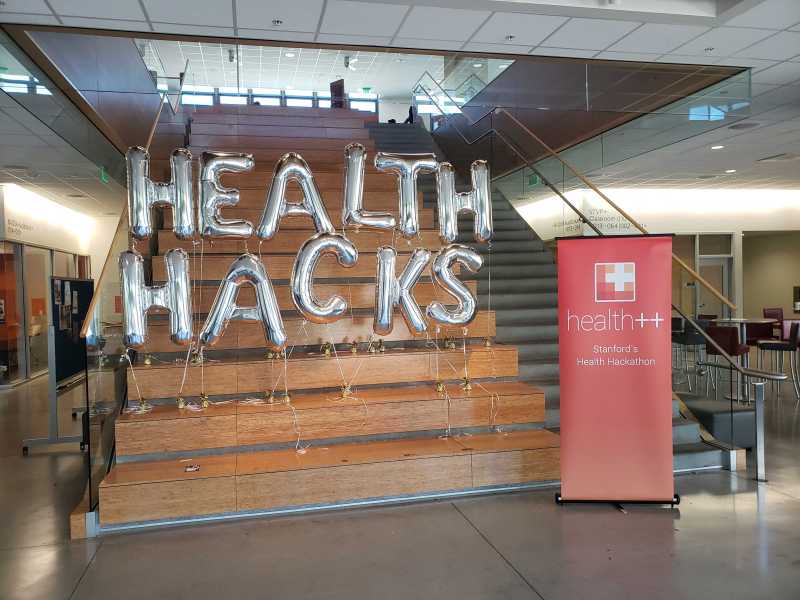On Saturday and Sunday, SHIFT hosted health++, a 300-person hackathon dedicated to pushing the boundaries of technology and healthcare. For two days, Huang Engineering Center was filled with countless pizza boxes and sleep-deprived hackers from far beyond Stanford working to accelerate medical care. Teams of between two and five people worked for more than 30 hours, culminating in a two-hour project expo where groups showed off their work.
SHIFT is a Stanford club that aims to encourage interdisciplinary work and advance the state of healthcare.
“We’re trying to promote and cultivate innovation on campus by creating a forum for many different students with different backgrounds to collaborate,” said Karissa Yau ’22, a member of SHIFT and one of the event’s coordinators.
Now in its fourth year, health++ is billed on its website as an event to “bring together 300 engineers, designers, business experts, and healthcare professionals for a weekend of ideating, designing and building for affordability in healthcare both domestically and globally.”
With hackers from as far as India and Japan and sponsorship from industry leaders including Anthem AI and Lark Health, health++ has positioned itself as a nexus of collaboration and innovative projects. This year, the event focuses on three subdomains: global health, mental health and chronic diseases.
“I think it’s cool because it brings together a diverse set of people,” Yau said. “We get Ph.D.’s, medical students, undergrads, business people, professionals and people from all disciplines and specializations together.”
Several of the hackers were excited about the opportunity to meet people from different walks of life. One team, with members from India, Mexico, Seattle and Florida, said the event was a great way to meet people with similar interests.
“I’m from a biomedical background and thought [health++] would be a great way to meet people who are passionate about the same things as me,” said Shruti Krishnamurthy, a student from India’s Vellore Institute of Technology.
Shalini Mohan, a senior from the University of British Columbia, agreed.
“My favorite part is meeting all the great people,” Mohan said. “It’s a great representation of, if you have the right group of people, you can have a really good project. We came away with something we’re all really proud of.”
She and her other teammates described how their project had created a way to connect migrant women from poor socioeconomic backgrounds to other women and non-governmental organizations for additional support through an SMS-based network.
Many groups tackled similar problems, seeking to provide resources to those who lacked them. Looking closer to home, another team developed a mental health monitoring tool to notify students when the first signs of potential mental health issues appear in their peers.
“We take into account movement, schedule and location and piece it together to identify what your regular routine should be,” Sonia Garcia, M.S. ’20 said. “If there’s a break in your pattern, like you’ve stopped going to the dining hall, or stopped showing to class, this will trigger a notification to a peer to reach out to talk to them. They can then intervene to professionals if necessary.”
Many of the sponsors who help run this event were similarly enthused about its unique potential. Emily Yarrington, Head of Talent at Lark Health, praised its interdisciplinary nature.
“We think ultimately the more truly talented individuals from all paths of life can get behind this type of mission, the better the world will be as a whole,” Yarrington said. “A lot of the ideas that were generated here are going to lead to sustainable business models and long term projects which will make real impact.”
After two long days, Alex Gruebele M.S. ’17, Min Joo Kim, M.S. ’19 and Peyton Randolph ’21 emerged as the winners of the $2,000 grand prize for Aquell, a way to self-monitor ankle swelling for chronic heart failure.
“We were excited to come up with a way to monitor edema because there really isn’t a good way to quantify it,” Kim said. “It’s a good way to home-monitor for heart complications because they can’t really go to the clinic, or they have physical limitations, to go to the doctor all the time.”
Contact Mihir Patel at mihirp ‘at’ stanford.edu.
